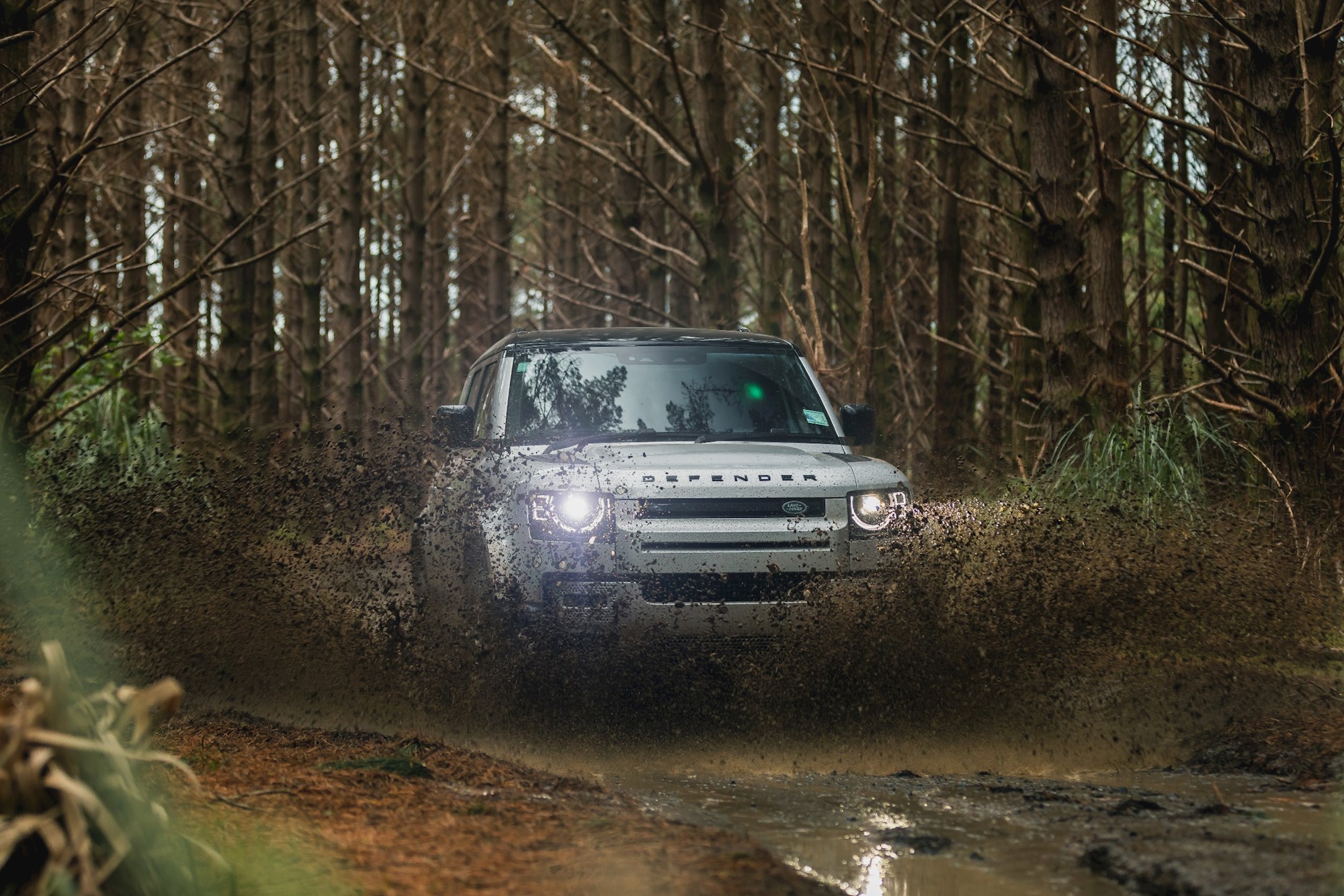The chunky tyre tread, the familiar proportions, splashes of mud and dirt divided by tell-tale marks from bush and branch— all of it points to the search for authenticity.
Against a backdrop of modern day SUVs being effectively taller cars, Land Rover has always marched at the front of the train as a maker of truly authentic offroaders.

At the core of the pursuit has been its iconic Defender. It wasn’t always called the Defender, of course. Perhaps too willing to let the vehicle speak for itself instead, Land Rover’s quintessential off-roader started life known simply as the Series I in 1948.
For almost four decades, it accrued a collection of tweaks (a wheelbase extension here, a new engine there) before getting a sizeable overhaul and a new name from the 1990s: Defender.
Now, the Defender has changed once again. Only, calling the all-new Defender a “sizeable overhaul” simply doesn’t cut it.
Over 70 years of development, trial and error, and rigorous outdoor exploring has resulted in the new Land Rover Defender; a vehicle that’s in a category of its own. And yes, after an anxious 12 months of early orders and teasing rumours, the most anticipated SUV of the century has finally landed in New Zealand.
This is a four-wheel-drive adventure-hunter that’s all-new in every sense of the term. Faithful ladder chassis tech has been swapped for a high-tech, lightweight aluminium monocoque— the stiffest body structure Land Rover has ever produced.
Wrapping this intelligent platform is a body that manages to both pay generous homage to Defender models of old, while looking bang up-to-date for the start of a new decade. Rounded edges inside and out aid aerodynamics and comfort, while the squared-off glasshouse, wing vents, white top and signature bonnet lettering hark back to its heritage.
The engine options have smartened up, too, tailored for capability, efficiency, and refinement while offering a handy amount of depth and breadth to suit any buyer. The most accessible D200 and D240 models come equipped with economical but punchy 2.0-litre four-cylinder twin-turbo diesel making up to 177kW/430Nm.
Petrol options start with the P300 and P400, before arriving at the cutting edge P400 3.0-litre petrol, which makes use of a mild hybrid system to complement its powerful 294kW/550Nm, with next-gen fuel saving abilities (9.8l/100km Combined).
But, this is about much more than just an engine and a body shell. Land Rover has pumped the all-new Defender with all sorts of fascinating tech wizardry and luxury perfect for trips to the bach for a weekend.
The firm’s Pivi Pro infotainment system is inspired by smartphone usability to make use of apps, satnav, the Meridian surroundsound audio and other tools an intuitive breeze; smartphones can be charged wirelessly in the Defender’s centre console. Its climate control is supported by a Cabin Air Ionisation system that removes allergens and airborne bacteria; and buyers can opt for endless combinations of leather and wood finishes.
These elements and the many more within not only make it more than a match for its core roughand-tumble off-roading rivals; the segment-defying Defender also carries the required luxury chops to take on any other premium SUV. But piecing together such a vehicle requires a balance. The arrival of new technology needs to be counter weighted by the preservation of tradition; particularly in the case of a brand as recognisable and iconic as that of the Defender. Land Rover’s thirst for new technologies has enhanced the Defender’s offroading abilities, not diminished them.
Not only does the 360-degree ClearSight system help with executing the perfect parallel park. It’s also been designed to provide unique perspectives specifically for the next off-road excursion. Large rocks or divots are mere bumps in the road, and it’s the perfect sidekick to the Defender’s newly tweaked Terrain Response suite of drive modes.
Normal, Rock, Mud, Snow, Wade and Sand are all available as drive modes— each coming with its own individual throttle, damping and electronic calibration. Those wanting to have a greater level of control can adjust traction sensitivity, accelerator response, and differential control individually.
Those more keen to soak up whatever picturesque sights reside outside can let the Defender’s incredibly clever Auto mode do all the work; it’s up to
you.
What makes the Defender a true marvel is that, even if all these new age innovations were stripped away, it would still be a powerhouse based on its numbers alone.
The impressive power and torque is supported by 3500kg of towing capacity and 900kg of payload— enough to haul a loaded horse float or to justify an upgrade on the family boat. The Defender is also capable of wading into water as deep as 900mm, and Land Rover’s wonderful design also ensures exemplary approach, departure, and breakover angles (30.1, 37.7, and 22 degrees, respectively).
No track too gnarly, no incline too steep. The proof, ultimately, is in the pudding. DRIVEN has sampled the Defender on all manner of terrain; from conquering almost 1000km of Kaokoland Expedition in the red dust and fissured earth of Namibia, to driving it on traditional Kiwi backroads in the Hunua Ranges.
On each occasion, no matter the setting, the Defender has proven itself to be capable of great things across a very wide scope— a champion of durability, capability, design, and technology. It’s truly one of the most versatile vehicles money can buy. Seven decades on, an icon reinvented.


